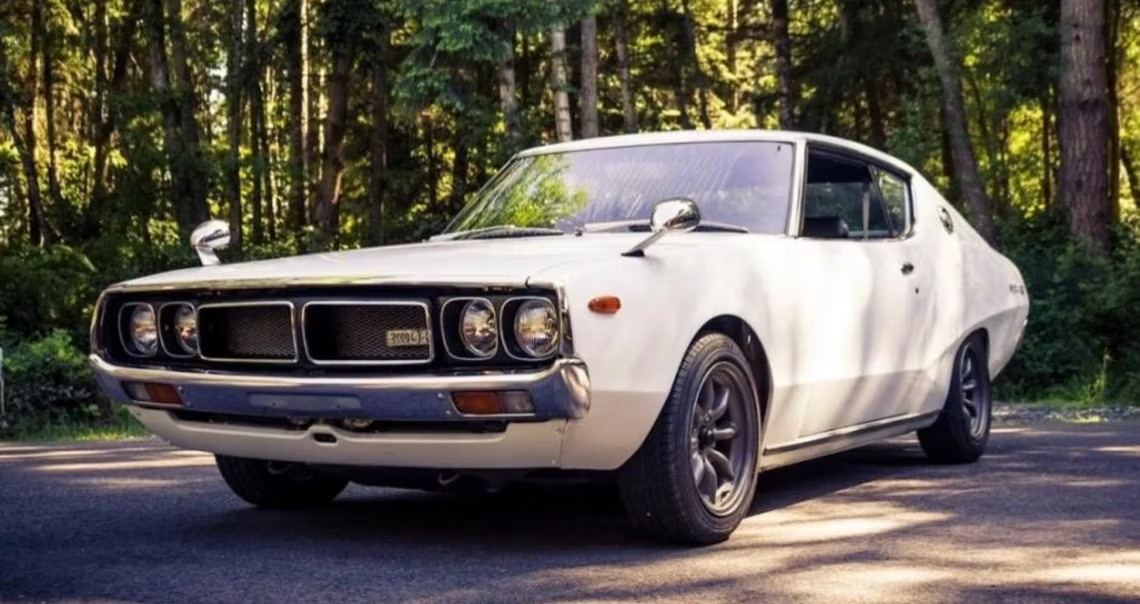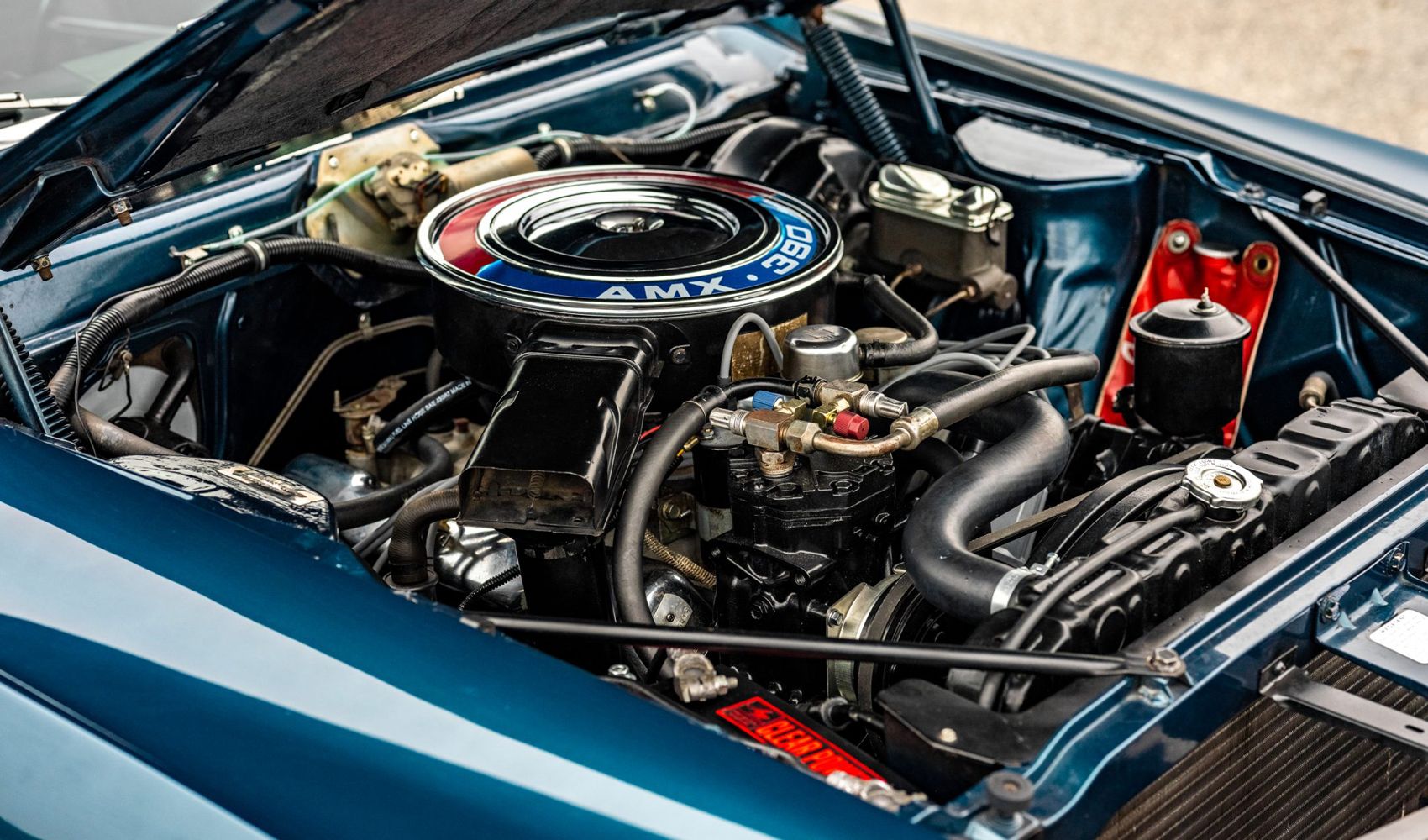Muscle cars are often associated with American cars. But some don’t know that the Japanese also have a muscle car of their own in a GT-R.

Most will agree that America is home to the coolest muscle cars that you’ll ever see on the streets. You have the classics like the Yenko Camaro, Mustang Boss 429, and even the Dodge Charger 500. American car brands were already the leaders in building powerful muscle cars.
But car manufacturers from Japan wanted to build cars differently by using the latest automotive technology that improves the car’s overall driving and performance. However, one Japanese car that had people thinking it was a muscle car was the 1973 Nissan Skyline 2000 GT-R.
Also known as the “Kenmeri,” it’s the second variant of the well-known 1969 Skyline 2000 GT-R that raced and won 50 championships in just three years. While it wasn’t as successful as the other generations of the Skyline GT-R, it definitely became a head-turner for its appearance. If you think that Japanese car manufacturers didn’t have ‘muscle cars’, this Skyline 2000 GT-R might change your mind.
Here’s How The Nissan Skyline 2000 GT-R Was Born
Ever since Nissan produced the first generation of the Skyline GT-R, everyone knew that it was going to be huge in the racing scene. What some don’t know is that Nissan didn’t make the first Skyline. Instead, it was the Prince automobile company that made the original Skyline GT S54. The first Skyline that the team from Prince built had a 2.0-liter G7 inline-6 engine that produced 160 horsepower, the same engine that you can find in the Prince Gloria sedan.
One thing to notice about Prince’s version of the Skyline is that it looked more like a small, classic American 4-door sedan. The roof was also higher compared to Nissan’s first Skyline 2000 GT-R and had wheels that looked similar to classic cars like the Ford 100E. Everything about the Prince Skyline GT screamed of a typical American sedan back in the day. Even if it looks like an ordinary 4-door sedan, this Prince Skyline GT managed to win the second Japan Grand Prix “GT-II Race” on May 3rd, 1964.
When Nissan integrated Prince into their operations in 1966, it collaborated and came up with the very first KPGC10 Skyline 2000 GT-R that we all know today. They added the “R” later on to signify that Nissan built the car with racing in mind. Avid sports car fans liked this version because it included bucket racing seats, a three-spoke steering wheel, and the famed S20 engine that drove the car to win championships. You also have the rear fender flares that let you install wider wheels, giving the car more grip to drive it around a racetrack.
![1973 Nissan Skyline 2000 GT-r [3819 ×2387] : r/carporn](https://external-preview.redd.it/K8lghwPFziw7hFPR4NiPOs3Xq9-zJzOyLz93oFz2Bkw.jpg?auto=webp&s=5a6ee00dcb138dbc411cef22b0798972095ead9d)
Seven years later, they manufactured the second generation KPGC110 Skyline 2000 GT-R, named the “Kenmeri.” This version had a hatchback body and a different front end. It also had a straight-shaped hood compared to the Hakosuka, which had a hood that followed the front grille’s shape. It had fender flares on all four sides and circle-shaped tail lights that became standard in the following Skyline GT-R generations. However, this second-generation Skyline GT-R didn’t last long due to the oil crisis in the early 1970s. Nissan only manufactured a total of 197 cars, making this the last GT-R until 1989.
Why Does “Muscle Car” Always Relate To American Cars?
The “muscle car” word became famous in the 1960s with the Pontiac GTO. From then on, people started using it on other American-made cars as long as it met the requirements of a muscle car. There is no exact explanation of what muscle cars are. Still, you can usually classify it as an American-made two-door sports coupe with powerful engines designed for high-performance driving.
You can also identify a muscle car without seeing it as long as you hear the engine. The V8 engines relatively have a large displacement, giving it that “chug” sound that all performance muscle cars have. The exhaust setup also helps increase the volume of the muscle car’s engine note to the point that it trips nearby car alarms when revved. For V8 engines that don’t have the usual chugging engine idle noise, they can do that by installing aggressive camshafts.
The JDM 2000 GT-R Has The Body Of An American Muscle Car
As mentioned before, muscle cars don’t usually relate to Japanese cars because they simply don’t belong in the group. However, one can argue that the Skyline 2000 GT-R “Kenmeri” might fit in the muscle car category. Its body styling is similar to classic American muscle cars, except that Nissan made it for Japanese consumers. Even James Pumphrey from Donut Media said that Kenmeri Skyline GT-Rs are “American muscle cars shrunk down.”
While it may not have the standard V8 engine, it can definitely compete against some of the strongest muscle cars if tuned properly. You can even find several car owners like Watanabe-san from Rocky Auto, Japan, that placed a V8 engine in a Skyline 2000 GT-R “Hakosuka.”

Even if Watanabe-san’s Skyline 2000 GT-R wasn’t the Kenmeri version, you could just imagine how people will react once they see a small Japanese car fitted with an LS or Hemi engine. Keep in mind that the Skyline 2000 GT-R’s engine bay is large enough to fit a 1UZ V8 engine, so it’s only a matter of time before someone thinks of replacing the S20 engine with a big block V8.











